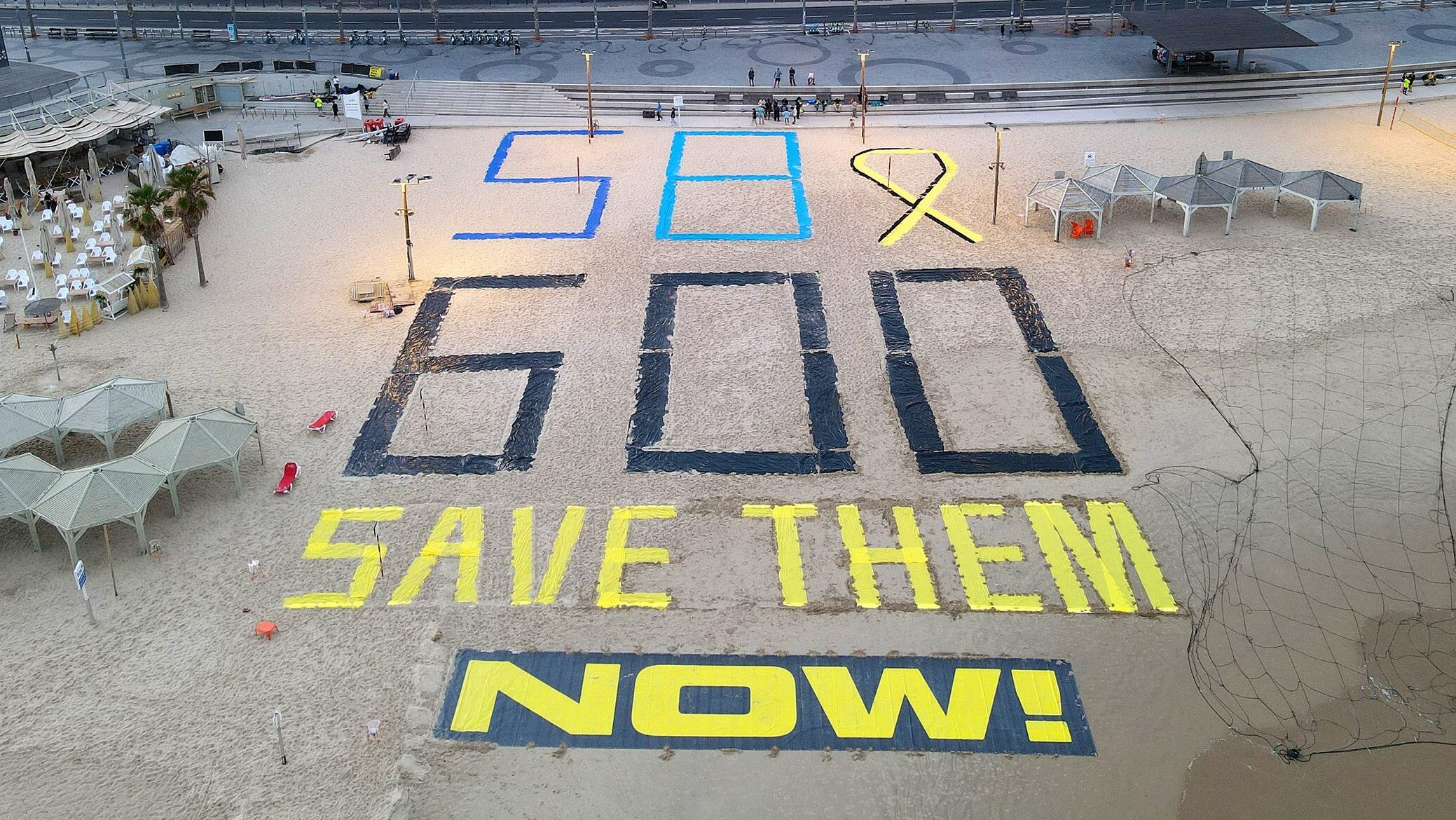Israel Marks 600 Days of War With Nationwide Protests Demanding Hostage Release
Demonstrators across the country mark a painful milestone with calls for government accountability and renewed efforts to bring home the remaining captives
On Wednesday morning, demonstrators across Israel marked 600 days since the October 7, 2023, Hamas-led attacks that ignited the ongoing war in Gaza. At 6:29 a.m.—the exact time the assault began—citizens gathered in cities including Tel Aviv, Jerusalem, and Zikhron Yaakov, forming human chains and yellow ribbon symbols to demand the return of the remaining 58 hostages still held in Gaza. The protests, organized by families of the captives and civil society groups, underscored growing frustration with the Israeli government’s failure to secure their release.
Prime Minister Benjamin Netanyahu confirmed last week that only 21 of the hostages are believed to be alive. The rest are either confirmed dead or their status remains unknown. The Hostages and Missing Families Forum has called for the resignation of Strategic Affairs Minister Ron Dermer, who leads the negotiation team, citing a lack of progress over the past 100 days.
The war, now in its 600th day, has brought both military gains and profound humanitarian costs. According to the Health Ministry of Gaza’s Hamas-run government, at least 54,056 Palestinians have been killed and over 123,000 injured since the conflict began. Among the dead, the ministry says, are more than 16,500 children. The ministry’s reports of casualties do not distinguish between combatants and civilians. Entire neighborhoods have been flattened, and over two-thirds of Gaza’s buildings have been damaged or destroyed.
Israel has also paid a steep price. According to official figures released by the Israel Defense Forces (IDF) and Israel’s Foreign Ministry, more than 1,200 Israelis were killed on October 7 alone, including civilians, soldiers, and foreign nationals. Since then, over 680 Israeli soldiers have been killed in combat operations, most of them in Gaza. Thousands more have been wounded, many seriously. Dozens of Israeli civilians have also been killed or injured by rocket fire, drone attacks, and infiltration attempts throughout the conflict.
This holiday season, give to:
Truth and understanding
The Media Line's intrepid correspondents are in Israel, Gaza, Lebanon, Syria and Pakistan providing first-person reporting.
They all said they cover it.
We see it.
We report with just one agenda: the truth.


Israel’s military campaign has severely weakened Hamas’ operational capabilities. As of January of this year, the IDF claimed to have killed over 20,000 Hamas fighters and 3,000 members of other armed groups in the Gaza Strip. It has dismantled much of Hamas’ tunnel infrastructure and degraded its rocket arsenal. Senior Hamas leaders, including military commander Mohammed Sinwar, have been killed in targeted strikes.
In the West Bank, Israeli forces have arrested approximately 15,000 Palestinians and killed around 950, most of whom were identified as members of armed groups. The IDF has conducted operations in areas previously considered off-limits, such as the Jenin refugee camp, aiming to dismantle terrorist infrastructure.
Despite these military achievements, the humanitarian situation in Gaza remains dire. A recent attempt to distribute aid through the US-backed Gaza Humanitarian Foundation ended in chaos when Israeli troops opened fire near a food distribution center in Rafah, injuring several people. The foundation has faced criticism for its lack of preparedness and for operating outside the framework of established humanitarian organizations.
Ceasefire negotiations continue, with Hamas reportedly accepting a US-proposed 60-day truce that would include the release of 10 hostages and the remains of 16 others. However, Israel has not officially responded to the proposal. President Donald Trump has expressed support for the deal, but Prime Minister Netanyahu remains focused on achieving “absolute victory” over Hamas.
As the war reaches its 600th day, the Israeli public remains deeply divided. While some view the military campaign as necessary for national security, others are increasingly critical of the government’s handling of the hostage crisis and the humanitarian impact on Gaza’s civilian population. The ongoing protests and calls for new elections reflect a nation grappling with the complex realities of a protracted and devastating conflict.

